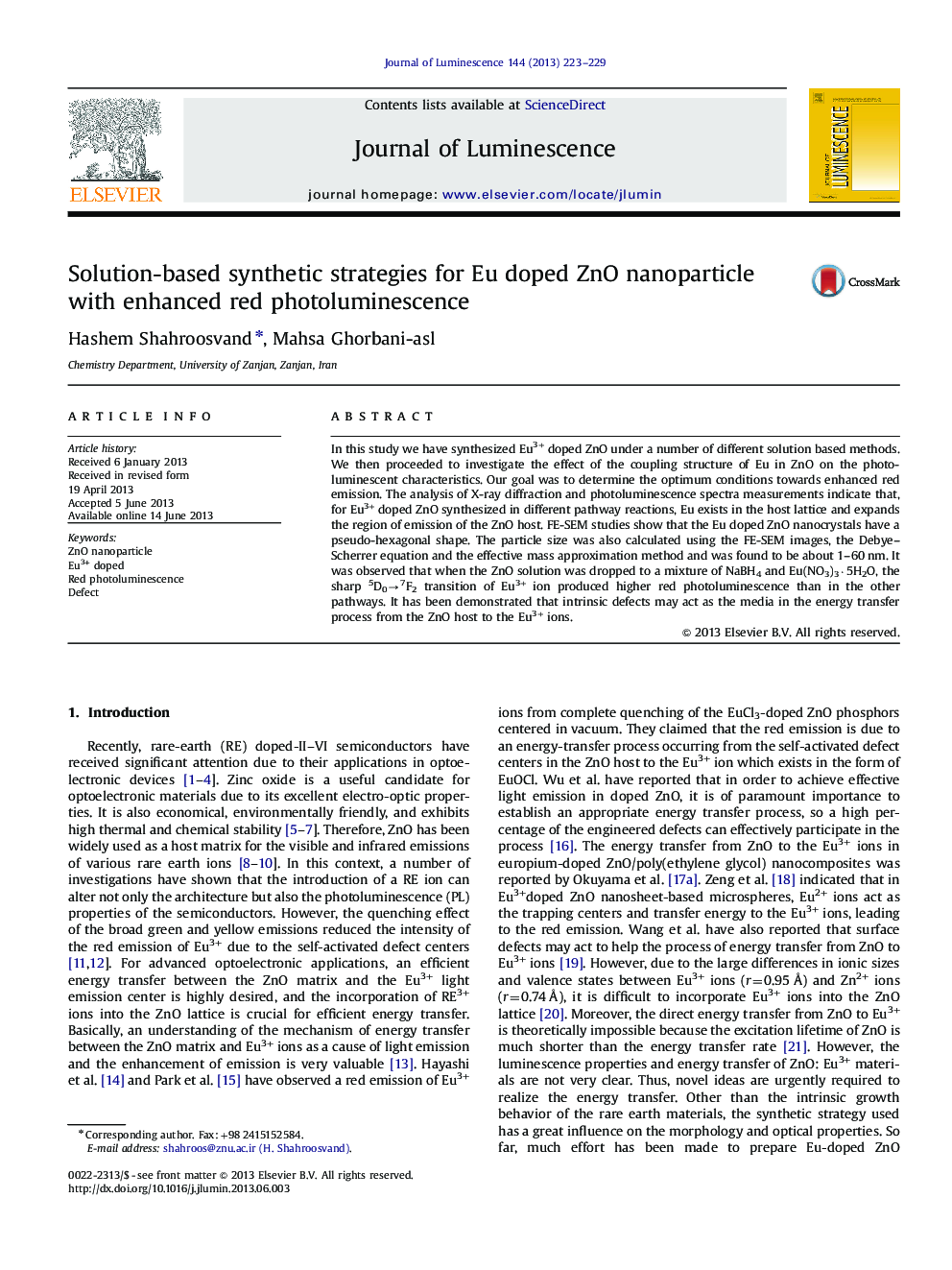| Article ID | Journal | Published Year | Pages | File Type |
|---|---|---|---|---|
| 5400624 | Journal of Luminescence | 2013 | 7 Pages |
Abstract
In this study we have synthesized Eu3+ doped ZnO under a number of different solution based methods. We then proceeded to investigate the effect of the coupling structure of Eu in ZnO on the photoluminescent characteristics. Our goal was to determine the optimum conditions towards enhanced red emission. The analysis of X-ray diffraction and photoluminescence spectra measurements indicate that, for Eu3+ doped ZnO synthesized in different pathway reactions, Eu exists in the host lattice and expands the region of emission of the ZnO host. FE-SEM studies show that the Eu doped ZnO nanocrystals have a pseudo-hexagonal shape. The particle size was also calculated using the FE-SEM images, the Debye-Scherrer equation and the effective mass approximation method and was found to be about 1-60 nm. It was observed that when the ZnO solution was dropped to a mixture of NaBH4 and Eu(NO3)3·5H2O, the sharp 5D0â7F2 transition of Eu3+ ion produced higher red photoluminescence than in the other pathways. It has been demonstrated that intrinsic defects may act as the media in the energy transfer process from the ZnO host to the Eu3+ ions.
Related Topics
Physical Sciences and Engineering
Chemistry
Physical and Theoretical Chemistry
Authors
Hashem Shahroosvand, Mahsa Ghorbani-asl,
